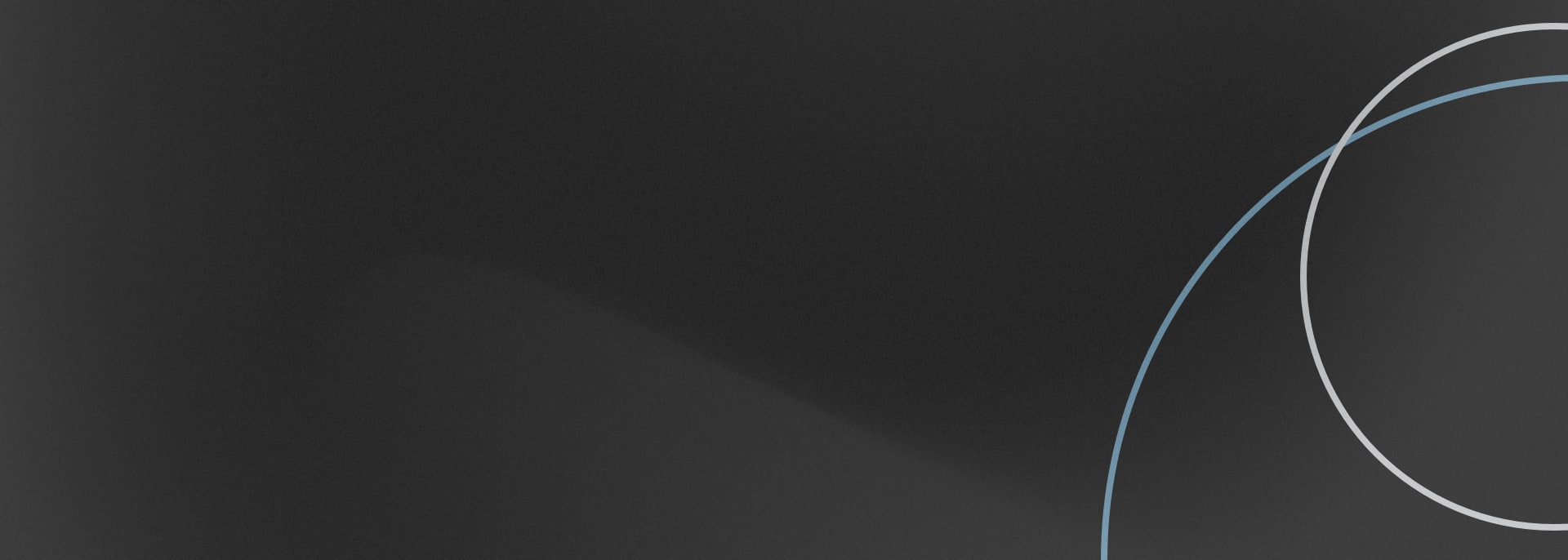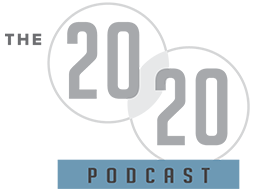
There is a world of possibility and opportunity when writing single-vision prescriptions for our patients. Gone are the days of the basic distance-only scripts, or at least they should be! In this episode, Dr. Gary Matter shares his journey into myopia management, how valuable the HOYA MiYOSMART lenses have been, and how he maximizes single vision scripts for all non-presbyopic patients. He also dives into the use of photochromic for single-vision glasses. There is so much to unpack in this episode of managing myopia with these cool technology lenses. Tune in for more!
Learn more about the new HOYA MiYOSMART Chameleon technology:
https://www.hoyavision.com/for-spectacle-wearers/miyosmart/miyosmart-sun
—
Watch the episode here
Listen to the podcast here
Starting Myopia Management And Maximizing Single Vision
We’re at Clarity Eyecare with my very good friend, Dr. Gary Matter. Dr. Matter is a graduate of the New England College of Optometry or NECO in 2012. We’ve been friends since NECO and have been following each other’s journeys here back in BC. Gary is also a partner at Maple Ridge Eye Care here in BC and a father of three. We have so many things in common. Before we go too deep into the episode, I want to say thank you to Hoya Vision Canada for supporting this episode and supporting the show as a whole.
We are going to talk about myopia management. We’re going to have a series of conversations about myopia management, this one being the first in this series of 3 or 4 conversations. I wanted to have this conversation with Gary as we are going to be talking about how we get started in myopia management, what it looks like to get started, and what are the early stages of that. Also, beyond myopia management, how do we grow our single-vision prescription category versus simply providing single-vision glasses? How can we add other benefits and advanced lens types for those patients in that category?
—
Without going too far into the show, Gary, thank you so much for being here. I appreciate it.
It’s a pleasure. It’s nice to be in your office and be surrounded by such greatness. I appreciate the opportunity.
Thank you very much. I appreciate that. We were saying before we went on about the fact that you’re not so present on social media. You said it yourself. That’s a valuable thing to bring to this show. A lot of times, we look for guests that maybe have an online presence and can spread the word a little bit. When we’re talking about something like this, this is a very practical, tangible, clinical type of conversation. We don’t need somebody who has an online presence. We need somebody who has that personal presence in a clinic and understands what it takes.
You’re a partner in a busy clinic. You oversee multiple doctors, staff, and all those things. You’re bringing crazy amounts of value in that sense. As we said, just because it’s not on social media doesn’t mean it’s not real. In fact, it’s the other way around. A lot of the time, the people who are not on social media often are the ones that are working, and the ones on social media are usually the ones taking pictures and going places. Let’s get into this a little bit. Tell me about your journey of venturing into myopia management. How long has that been, roughly? How did you get into it?
The earliest introduction was several years ago. It was a slow organic change. I believe it was ZEISS. ZEISS had the MyoVision lenses a long time ago. I had almost forgotten about them because we had used them on occasion when the opportunity presented itself. We had several dozen patients and children who were in those lenses for many years. It’s not until a couple of years ago, Hoya, the MyoVision, and some of the CooperVision had MiYOSMART. Cooper MiSight contacts have been a viable option with a lot of research behind them. It was a slow organic growth several years ago.
That’s a pretty long time. That’s longer than mine and most other practitioners who are in the myopia management space. I did my presentation at the BCDO. We had our conference here in Vancouver, which was great as always. After that, I had a couple of people come up. Docs that are a little bit older than us had come in and told me that they’ve been practicing myopia management for decades. It’s only recently that it’s become something that people are digging into and maybe putting a value on because we have more research behind some of these products. I dabbled in atropine for 5 or 6 years before the MiSight, MiYOSMART, and all these things became available to us. What are you doing in your practice for myopia management? What types of treatment options are you providing?
We both mentioned the increase in research and the validity behind doing some of these things. That’s what has interested more practitioners in getting into it. There are four main types of treatments. We do offer all four options, atropine, glasses lenses, contact lenses as well as orthokeratology.
You offer all four in the office. For me, for example, we do three out of those, which are spectacle lenses, soft contacts, and atropine. After I’ve presented all four options to the patient and the parent, if they decide they want to go ortho-k, I’ll refer out for that. In your case, would you do that yourself, or would you pass that on to another OD within the office? What does that look like?
It hasn’t happened in practice yet, so it’s a theory. If that choice is made that orthokeratology is going to be the best option for that child, more than likely, it would probably be me. I do have some additional training in RGP and hard lenses that we do utilize in the office. It also requires a topographer. It generally is recommended for orthokeratology with myopia management, I believe, to have the axial length measurement as well so you can better measure that. Otherwise, it’s a little bit challenging. We do have that technology available to us, but so far, nobody’s taken us up on it.
You’re trained in it and you have the technology available to pursue it. I was going to ask you about the axial length. I’ll keep that for a little bit later. I was going to ask your feelings on if that’s necessary or at what stage of the process. Tell me a bit more about the 3 that you do regularly, spectacle lenses, soft contacts, and atropine, what’s your split as far as patient uptake on those 3?
It’s interesting. I’m sure every demographic and area will be a little bit different. Each practitioner is probably more comfortable with one or the other. Ultimately, it’s a decision between the practitioner, the parents, and the child. It’s what’s going to work the best for them. We do have quite a few active children, and I find myself recommending contact lenses highly. The glasses lenses have probably been the secondary route. It’s much simpler. Everybody understands glasses. It’s a new technology and a new treatment lens for them.
We’re going to get back into the treatment options and that thing again, but something that I wanted to mention right off the top is a big part of this is we want to try to increase the awareness and the comfort level for ECPs to lean into myopia management. One of the things that I suggest is that we need to look at myopia differently.
Many of us look at myopia as a refractive condition, which it is, but it is more than that. I say we need to look at it as an actual ocular disease because of the potential long-term impacts on ocular health and so on. A) Do you agree? You can disagree with me on air. That’s fine. B) Tell me why switching our mindset to that kind of thing will be important in the long term.
I am in agreement. If we don’t look at it as a disease, we won’t be looking at it to treat it. This is something that we can treat in the sense that we are improving the outcome for a child in that way. I would agree with you 100% that we should look at it as a disease.
If we don’t look at myopia as a disease, we won’t be looking at it to treat it.
I agree with you again. As far as myopia treatment goes, I know it’s a stretch, but we often make that analogy to glaucoma. We don’t say, “Your IOP is high. Let’s see what happens.” We don’t also say, “Here’s your prostaglandin analog. I’ll see you later.” We have to do all the testing and the measuring and have people come back over and over. That’s similar to how we have to start to look at myopia management. Let’s go back to when we have the patient in the exam room, what type of questions are you asking the parent to help them make that choice between those options?
First, we have to identify whether this child is at risk for developing progressive myopia. We do have a checklist in the office as far as their risk factors. Usually, it centers around their age as well as their activity level. Somebody who is very active might have a harder time with atropine with the light sensitivity outside playing baseball. That’s probably the first starting point. It is their activity level.
How about beyond that? Do you get pushback from parents or patients about aversion to eyedrops? Do parents say that maybe they feel like their kid’s not old enough for contacts? Where would you say are some of those hesitations in those options?
That makes a lot of sense. Not everybody or their child wants to be taking an eyedrop, so there has been some pushback. Generally, for the younger ones with that early-onset myopia is where we tend to see that recommendation to initiate atropine therapy. Sometimes, our recommendations and encouragement outweigh that. Ultimately, that is the best decision for them at a young age.
There is something we were talking about earlier offline. I’m referring back to my presentation multiple times. I apologize. It’s called the Myopia Startup. If you see it, please sign up for it next time you’re at a conference. I’m not trying to shamelessly plug myself here, but it’s because it happened not long ago. It’s very fresh in my mind.
He knows what he’s talking about.
I appreciate it. That’s very kind. The reason I keep referring to that is that I had that presentation not long ago, so it is still fresh in my mind. I asked the audience. In that presentation, there’s a question. We’re going through this conversation with the parent and the patient, like, “What option’s going to be best for you with your activity level, comfort level with different treatment options, and so on?” What’s the golden question that a parent is most likely going to ask the doctor? What would you recommend if this was your child? Gary is a father of three as am I. What were you telling me about being a dad and how that impacts your decision-making there?
Knowing what a parent is thinking, experiencing, and worrying about for their child is easy to relate to in those situations. Talking to parents that are already myopic is generally an easier conversation because they understand the potential future problems that their child might encounter as a myo.
It gives you that level of empathy. To anybody reading who doesn’t have kids, it’s perfectly okay, but it does give you that level of empathy that perhaps you wouldn’t have had. I know for myself, for sure, if, years ago, somebody came in and ask that, I would start thinking about my nieces and nephews perhaps and try to create that empathy. Certainly, it helps you see that from a different perspective. For those of you out there, after a few years of doing this, I preemptively will say, “If this was my kid, this is what I would do.” I’m not doing it to push them out of the room and make a sale. I know that parents are looking for that extra little piece of encouragement. Would you agree?
It’s a common question that we get. Everybody wants to know what they would do in that situation. Instead of having 100 questions, we pre-empt to 1.
I feel like you cut out half the questions by making that one statement. People ask us these things all the time, like, “Would you wear this lens?” They ask you that anyway.
That’s a good corollary. They’re like, “Where would you go for Lasik?”
Exactly. It’s common they want our opinion and our perspective. We are the trained professionals in front of them. Being a parent also gives you that extra little level of empathy and advantage even. We were talking about spectacle lenses. We do a fair bit of MiYOSMART here in the office. Let’s talk about when you’re writing a prescription. What information are you going to give to the parent and the patient to prep them? What happens after when you walk out of the exam room, the handoff situation to the optician, and things like that?
That’s crucial. We have trained all of our opticians, not just one. We have a large team. Unfortunately, we haven’t been able to implement a champion or one go-to person for that myopia management. We have trained our whole staff to be aware of these types of lenses and to be able to talk about them. Like other progressive lenses or other lens modalities, opticians are the experts. It’s one more lens in their repertoire. The recommendation is going to be made in the office by the optometrist. The lens technology is introduced. It’s important with this new and brand-new concept to them that technology is briefly discussed, but it is handed over to one of our opticians.
You do mention a little bit about how the lens works in the exam room.
Probably not specifically. It would be towards myopia management and myopia control goal and less about the optics.
That’s part of what we have to figure out in the exam room. It is how to streamline that conversation
Personally, everybody’s going to have their own spiel or flow that works for them.
When you bring the patient out, you hand them over to the optician. All of the opticians are trained on that lens and are comfortable, well-versed, and all of that. They would do the proper explanation of exactly how that lens works.
We created a presentation that we can pull up on our computers that brings them through the flow of the problem of myopia, its potential repercussions, how to treat it, and then specifically the different treatments and how they work.
What type of platform is that? Is that a PDF or a PowerPoint presentation?
It’s both. We created it in PowerPoint. I believe we created a PDF as well so that it’s uneditable.
You or the optician would go through the slides and educate the parent and the patient right there. That’s good.
It’s accessible on our server at all of the terminals so they can share their screen if they have specific questions. It was mostly to deal with those extra questions. Once you’re done with the optometrist, they’re going to have XYZ questions about the lens and the follow-up or whatever else that may not have been initially addressed.
The optician and the staff will have the time to go through that. That’s the important thing. We want the optometrist to be the point of introduction for this treatment, but we don’t necessarily have the time to sit there for ten minutes to go through what the technology looks like. You mentioned the idea of having a champion. We don’t have that. We have a similar setup. Although our clinic is smaller and has less staff here, the opticians are all comfortable speaking over the lens. Do you think it’s valuable to have that one go-to person that is the leader of myopia management?
It’s a great concept. In chatting with other colleagues as we all are starting to do more regarding myopia management, it seems to be a common theme in clinics. As I mentioned with our time constraints and larger staff, it has been challenging to implement a single person. It’s more of a team effort, for sure.
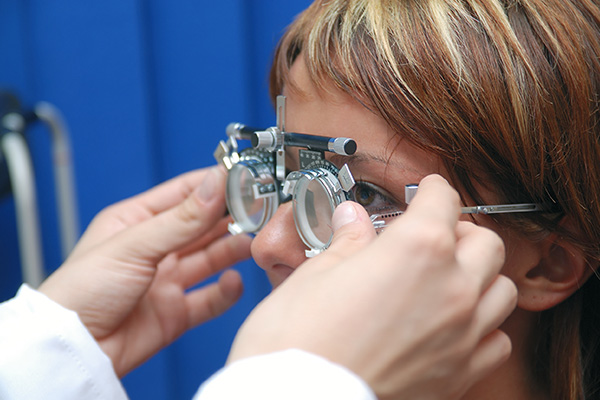
We’re not as busy, but I’ve felt that for myopia management so far, it’s worked better for us to where everybody’s trained. Whereas for dry eye, we have one specific point person. It’s probably a pretty obvious answer, but I haven’t thought about why it’s worked better. Naturally, that’s what’s happened for us. There may be a day when it’s like, “We’re busy enough. We need one person full-time running the myopia management side of things.”
Wouldn’t that be nice?
It would be. If you enjoy myopia management, it’s a dream. It’s not a bad idea. As far as expectations for visual outcomes, do you talk to the patient about what it’s going to look like and the adaptation? Also, do you talk to the parent about what we expect the numbers to look like or how much we expect the progression to slow down? Do you give them those types of details?
Absolutely. Depending on the treatment modality, there are different rates of adaptation. We’ve found the contact lenses to be similar to Hoya MiYOSMART lenses as far as adaptation. We’ve almost had no issues across the board. With atropine, as you’re probably more familiar with, half a dozen or a dozen children that we have on atropine, they did have to be brought down and the symptoms did need to be discussed.
The typical light sensitivity and low accommodation were affecting them. From that perspective, more time is probably spent with regard to atropine. Glasses and contacts are familiar concepts to most people. With regard to what’s conveyed to the parents, we do have a form that we make the parent and the child sign as far as a liability as well as no guarantee of outcome. It is discussed that it’s between 50% to 60%. That’s the target. Most modalities have proven in research that we should see that type of benefit.
That’s an interesting concept of signing a waiver to make sure that agreement is understood like, “There’s no guarantee this is going to work. On average, this is how it works.” That’s a good point. It’s probably something we’ll want to implement here.
We find better buy-in from those as well. It will prevent or hopefully save you from some of those parents who were like, “I thought you told me this was going to fix my kid’s myopia.” You could be like, “You signed a little sheet of paper here in very plain language.” That’s maybe helpful. Luckily, we haven’t had too much pushback, but it’s always good to document everything.
Also, by documenting in the way that you have with your presentation on what myopia is and how the lens works, showing that presentation to the parent is a form of documentation. It is helpful as well. You always have something standardized. No matter who’s dealing with the patient, they all have the same data that they’re showcasing to the patient as well. That’s been beneficial in various ways.
You mentioned light sensitivity with atropine. That is very common. Some kids will adapt to it. Some kids will complain about it consistently. When the pupil is going to be fixed or dilated a little more than it should be, light sensitivity is a common complaint. Most of these kids who are on atropine will still require glasses or contact lenses. They’re myopic. In that case, what are you doing to help decrease that light sensitivity that children will likely face?
Right from the initial discussions of prescribing atropine, the light sensitivity and accommodation are addressed so there are no surprises. Along with the atropine treatment, it’s always recommended that we’re moving into anti-fatigue in the photochromics. If they become light-sensitive afterward, then we have to redo the lens or something of that nature. We have had a couple of redos in that situation, so right off the bat, we attempt to recommend that photochromic. It makes sense from a comfort standpoint as well as from a protective standpoint for that child. They’re already wearing glasses because the atropine is not refractively correcting their myopia. They still require those spectacles.

This is part of the conversation that I wanted to get to anyways. It was the idea of expanding our single vision prescription toolbox, repertoire, or arsenal. When we have a child and myopia management allows us to do that as well to open up the toolbox a little bit, rather than simply prescribing a single-vision pair of glasses like, “Here’s your minus three and your atropine prescription. I’ll see you later,” you have the opportunity.
We’re not doing this for the sake of prescribing more expensive glasses. We are providing more advanced lens solutions to the patient that are going to help them. I was leaning towards asking about photochromic, but you also mentioned anti-fatigue. That’s a valuable asset that we have and one that I prescribe as well. What’s been the uptake on the anti-fatigue? Are there any issues with adaptation on that, specifically with those kids who are on the atropine?
With myopia management and children who are being treated with atropine, it’s been a very high uptake to the point of an almost necessary but highly beneficial fine line. With all of our atropine children, we do prescribe anti-fatigue right off the bat. Maybe 1 or 2 of them didn’t opt for them and we had redos on those. I would recommend starting that conversation and saying, “Here, this is part of the atropine and this is the solution. It’s going to be like a normal pair of glasses. Your child won’t notice it. It will benefit them.”
That’s an excellent thing. Knowing that there may be some accommodated lag or issues there, we are covering our bases with that. Kids are less likely to experience that. We’ll come back to photochromic in a second because that’s going to be another important part of that conversation about improving or increasing the opportunities to offer these more advanced lenses to our single-vision patients. Let’s stick with anti-fatigue for a second. Let’s talk about non-atropine maybe not even in myopia management patients. Where else are you prescribing anti-fatigue and seeing the value?
All over the place. We sell quite a few anti-fatigue. I like their versatility. The emerging price is the simple one. However, the college student and the young professional have probably been number two as far as how many we have in anti-fatigue computer vision syndrome, which can encompass a myriad of symptoms, and then multiple younger teenagers and preteens as well for similar issues. Generally, it’s going to be school issues, like seeing the board focusing back and forth, that headache that they develop, and things of that nature. We do prescribe a high amount of anti-fatigue for various situations, and we have been for years.
It’s been one of those lens designs that I’ve found to be super valuable. They are very versatile. There’s a conversation I’ve started to have. I’m going to share this with you and, hopefully, maybe somebody out there will find it valuable. When I’m speaking to that twenty-something-year-old, no longer progressing, probably myopic patient who is complaining about certain strains and things like that in their vision, our lifestyle is different. We’re not strictly looking far away. We’re looking at our phones, computer screens, TVs, driving, and all these different things. Sometimes, it is all at once. Hopefully, not phone and driving. You are not allowed to do that, but we’re doing all those things.
What I tell patients is when I talk about glasses, I say there are three important factors when we’re assessing the quality of pair of glasses. 1) Prescription. 2) The coatings on the lens. 3) The design of the lens. I say the third one is the one we don’t talk about enough. We say, “Here’s your prescription. Go get some anti-reflective blue light blocking,” and so on. We don’t get to the third one.
I’ll say that we don’t talk about the third thing enough. I’ll go through what an anti-fatigue design looks like or whatever design we may be needing. I’ve found the understanding and the uptake has significantly changed for the positive or for the better by going through that little spiel. I talk about that. That’s been helpful in patients understanding the value of these more advanced lens designs.
The other one that we were talking about and what I wanted to get back to was photochromic and the value of prescribing that. You started by telling me that almost all your atropine patients will end up in a photochromic. That seems, to me anyway, like a no-brainer. I hope others out there reading would feel the same way. Where else do you find the use of a photochromic valuable? How often would you say you’re prescribing it?
We have a whole talk about sunglasses and the different options for a patient. With the lens modality, each patient is going to have a different type of personality. We find that it works well for the personality of a person who wants everything all in one. Those work very well in those situations. It’s a do-it-all type of lens. Is it the same as a separate pair of prescription sunglasses? That’s usually the discussion that I have with them. The answer is no, but it’s probably the next best thing because it’s always on, which is a huge benefit. It’s not search for it and look for it. It’s already there.
That makes sense. Let’s bring these two topics together a little bit. We were talking about myopia management. We were talking about photochromics. Gary and I are sitting here recording a couple of weeks prior to this going live. We’re in mid-May 2023 here and this is likely going to go live early June 2023. Before this goes live, there’s an exciting new development that we were talking about briefly. That is that the MiYOSMART lens is coming out with photochromic technology in it. They call it the Chameleon, which is a cool name.
From what I understand, and I don’t want to go too deep into this, it’s not an integrated filter or technology within the lens. It’s a laminate over top, which helps to protect the aesthetic but also the actual MiYOSMART D.I.M.S. Technology design in the lens. That’s a super cool and exciting new thing that’s coming up very soon.
When this is live, that technology will be available. Please, if you’re interested, go check that out. I know I’m going to be starting to prescribe that for pretty much all of MiYOSMART patients moving forward, especially given that it’s summertime coming up upon us. What are your thoughts on that MiYOSMART Chameleon lens and how valuable do you think it’s going to be?
It’s a great option because up until this, I believed that we weren’t able to prescribe both together. It would’ve been two separate pairs. We can match and marry that technology together. Children are huge benefactors of this photochromic technology specifically with myopia management. It’s going to work really well.
I agree. It’s going to be another one of those that’s an obvious choice for parents as well where it’s like, “We can marry these two technologies together. Your kid has got everything they need all in one here.” It’s going to become one of those go-to options for us, perhaps even default. We can then give the regular MiYOSMART as our second option if the parent doesn’t want the photochromic on it.
Let’s switch gears a little bit. One of the biggest hesitancies that many practitioners have when they’re going into any specialty is price. They’re uncomfortable talking about price. They’re even uncomfortable setting the price around certain services. We’re not sure how to. I was wondering if you could share some thoughts.
Let’s talk about, first of all, the service side. A lot of these are perdue in myopia management. We’re going to need to do some follow-ups. It might meet only 1 or 2 follow-ups for some patients. It might end up being, if you do an ortho-k, 10 or 12 follow-ups. Are there any tips that you have or suggestions that you have for somebody out there who’s trying to integrate myopia management or any specialty for that matter and getting comfortable with figuring out pricing and offering a service for a price to the patient?
There is a lot to unpack there. Our journey has varied as far as what we initially offered and what we found worked for us. The most important aspect is understanding the equipment that you’re using and the cost of that equipment. It is understanding the cost of your staff’s time as well as your chair time and the optician’s time. With these more specialized services, there is a higher demand that the parents expect.
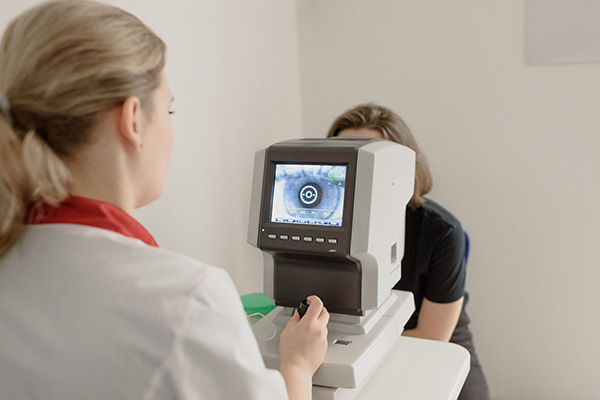
Initially, we had gone through that analysis. I would encourage everybody to go through it or at least start looking at that to have a better understanding of what you’re offering. If I could quickly mention, years ago, before this was a program, many people were doing it as part of their regular exam services. The result of that is that we offered a myopia management program and attempted to convey the benefits and all the additional things that they were getting for a certain price. Probably for about a year and a half, we had a low uptake at that point. I would call that a global fee.
I remember you mentioning this. You had a set fee that was upfront. Do you mind sharing roughly what the number was at ballpark? Was it $500 or $1,000?
It was $595.
That included all the follow-ups, testing, and so on. That was paid upfront as a lump sum.
It didn’t include the orth-k. There was a separate fee for that. There’s a lot more to that as we’ve discussed previously, but that would include the original assessment, the cycloplegic refractions every six months, and the axial length measurements along with the topographies. I believe it was a more generous time allowance for the chair time as well, which brought that price up.
You’re saying you had that in place for a year and a half, but the uptake was low. You feel like that upfront global fee was not well-received.
Initially, no. We switched to a more a la carte system. We have seen many more children and parents getting involved. The barrier to entry was much lower. It’s not to say we’re giving away the services. It adds up to similar, but people like paying as you go. It’s that sticker shock.
It’s easier to swallow when you’re doing $100 and then $100. I understand. That makes sense. I’ve heard colleagues talk about it both ways. They say, “If we’re doing atropine, pay $500 upfront. That’s going to cover whatever the number might be.” Some people say they have great uptake, but it depends on your clinic, the doctor, the demographic, and all these things. That’s a great story. Thank you for sharing that because there are going to be others out there who are trying to figure out what’s right for them. Sometimes, you have to test it out. Other times, you might know what your demographic is, and that’s great.
For us, we are more along the lines of what you’re doing. We have a combined system or a mixed system. If somebody’s doing a MiYOSMART smart lens, for example, it’s a premium lens so we charge a premium price. With that, we include a certain number of follow-ups and allot certain times. It’s easy for us to wrap it all up and say, “This pair of glasses or this technology includes your follow-up.” Atropine would be a different ballgame. We have to explore what’s going to work best for us.
We have to explore what will work best for us.
Going back a little bit to what you were saying earlier about the biometer axial length, I do want to quickly bring that back up again. In some cases, it is vital. In other cases, it may not be necessary. What’s your suggestion to someone who’s earlier on and dabbling? Let’s say they want to start doing atropine or start selling a MiYOSMART lens. Do you recommend they get it on day one or do you think they should pick it up along the way? What are your thoughts on that anyways?
There is no right answer to how to approach it, but get started doing something. During that time period when we had our global fee, it was all about getting the conversation started. I talked so much to parents about this new technology and I continue to do so. Parents are coming back a couple of years later for their annual examinations. This is where a lot of our growth is from. The organic growth of having that conversation is important.
There’s no starting point. If I have a biometer, I can start now. I love numbers. I’m looking forward to getting more of that data. That was why we invested in it. it was to spur us on to think about it and pursue that goal. Our utilization has been lower with the biometer. With glaucoma, there’s a metric. That objective data will be, down the road, very important, especially as your myopia management practice grows.
I agree with that. The more you can measure, the more you can manage. I agree. We don’t have an axial length machine yet, but we are looking into buying one soon. That’s going to help us track things more closely. That’s what a lot of this is about. It is tracking changes over time. That’s very good. Are there any other final words of wisdom that you would like to impart before we wrap up this conversation, whether it’s myopia management or expanding our single vision repertoire?
Get excited about it. This is a total shift in eye care. It’s something that I talk about all day long. The parents see genuine enthusiasm for protecting their children’s vision. The excitement is infectious. The optical benefits are present with multiple pairs. With the anti-fatigues and these new technology lenses being a little bit more premium, there are benefits all around.
That’s what we call a win-win. I love that. That’s a great place for us to end this. The enthusiasm that you see from the parent in the exam room is awesome. It’s cool to see parents’ eyes light up when you say, “Do you remember when we were kids and all we had was single-vision glasses? Now, we have other options available to us that can help slow down the progression and help treat your kids.”
Parents’ eyes light up. They’re so engaged, enthusiastic, and excited. If you start having that conversation, you’ll see that. It’s infectious. You’ll start to feel that encouragement yourself as a practitioner. Thanks so much. I appreciate this. It’s been a long time coming. We’ve been friends for long enough. I’m glad that I could finally bring you on.
I feel honored. Thank you very much for having me.
It is my pleasure. Thank you, everybody, who’s reading. Don’t forget. You can get this on YouTube, Apple, and Spotify. Wherever you get your favorite show, this will be there. If you got some value from this, be sure to share this, whether you send a link to your friend or post it on Instagram, LinkedIn, or wherever. Thanks again for tuning in to Canada’s number one optometry show. I’ll see you in the next episode.
Important Links
- Maple Ridge Eye Care
- YouTube – Dr. Harbir Sian
- Apple – The 20/20 Podcast
- Spotify – The 20/20 Podcast
About Dr. Gary Matter
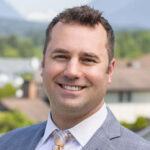 Dr. Gary Matter received his Bachelor of Science from the University of Waterloo with an emphasis in human physiology. He later returned to school to pursue his passion for eye care. He graduated from The New England College of Optometry amongst the flourishing medical community in Boston, Massachusetts. He has the distinction of being a member of the Optometric Honour Society during all 4 years of schooling in Boston.
Dr. Gary Matter received his Bachelor of Science from the University of Waterloo with an emphasis in human physiology. He later returned to school to pursue his passion for eye care. He graduated from The New England College of Optometry amongst the flourishing medical community in Boston, Massachusetts. He has the distinction of being a member of the Optometric Honour Society during all 4 years of schooling in Boston.
He completed a specialty contact lens rotation in the treatment of keratoconus, post-surgical complications, and many more corneal conditions utilizing scleral lenses and other forms of custom contact lenses. Dr. Matter is a partner in a multi-doctor clinic and He practices full scope optometry in a multi-doctor clinic in Maple Ridge, BC.



